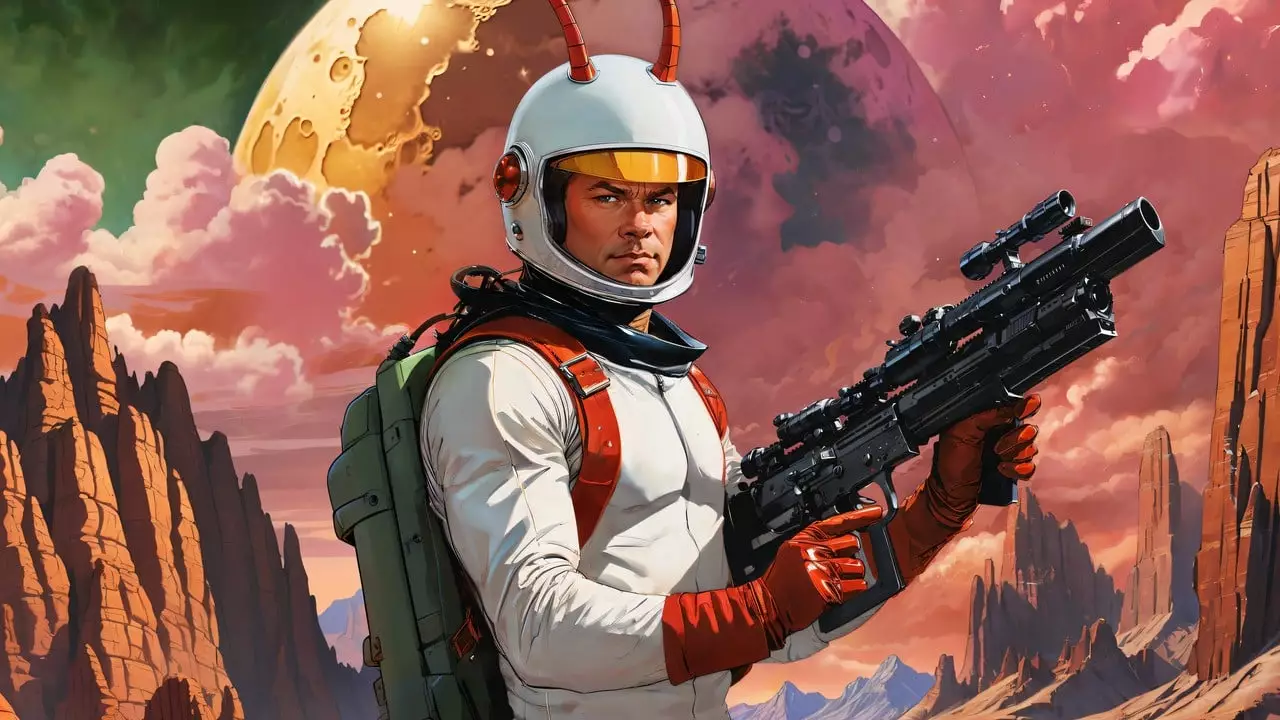The vibrant gaming landscape is often defined by its adherence to nostalgia while simultaneously pushing the boundaries of technology and art. One recent title engaging in this retro revival is ‘Moons of Darsalon,’ a platformer that has captivated audiences with its blend of classic aesthetic and modern mechanics. Developed by Dr. Kucho! Games, the game made its initial debut on Steam last year and is set to expand its reach by launching on the Nintendo Switch on February 6, 2025. As the gaming community buzzes with excitement, it’s worth examining what makes this title stand out—and what caveats accompany its journey.
At its core, Moons of Darsalon revolves around a mission of heroic proportions: rescuing a team of astronauts, affectionately titled “darsanauts,” from perilous extraterrestrial environments. The gameplay mimics classic titles like Lemmings, where players guide characters through intricate landscapes filled with obstacles. However, unlike its predecessors that purely relied on simple platforming mechanics, Moons of Darsalon enhances player engagement through a delightful blend of action and strategy—bringing run-and-gun combat into the mix. The premise may not break new ground, but it elegantly dances on familiar territories, appealing especially to fans who grew up with the genre.
The game’s gameplay shines through its unique mechanics that integrate AI-driven characters with player-directed strategies. Darsanauts come equipped with advanced artificial intelligence, capable of dynamic terrain detection and inter-NPC communication, creating a sense of teamwork reminiscent of classic camaraderie found in older iterations of group-based games. Additionally, the inclusion of voice commands to direct companions adds a layer of modernity, making the gameplay experience more immersive.
Furthermore, the introduction of tools such as the ground maker gun—allowing players to create and destruct paths—highlights a noteworthy leap in gameplay complexity that diverges from its inspirations. This innovation underscores a commitment to not only recapture the charm of retro gaming but also to introduce elements that keep players on their toes.
In terms of visuals, Moons of Darsalon employs a compelling visual style that merges 2D sprites with 3D models, all wrapped in a nostalgic CRT filter. The aesthetic, inspired by the limitations of retro gaming technology, exploits a restricted color palette, providing an authentic throwback experience. Complementing this is the game’s soundtrack, crafted using the beloved MOS 6581 (SID) chip, tapping into an era where music was both iconic and instrumental in shaping the gaming experience.
However, the shift from human-generated art to AI-generated imagery for some aspects, namely the loading screens, raises eyebrows. While the developer attempted to clarify this decision, concerns about authenticity and artistic integrity linger. It poses an ethical dilemma of sorts within the gaming community: can automation and artistry coexist without compromising one another?
The ongoing discourse around the use of AI in artistic spaces has intensified, and Moons of Darsalon is no stranger to this. While some players appreciate the game’s innovative attempts to modernize its visual components, others view it as an erosion of creative authenticity. The developer’s choice to employ AI raises essential questions about the future of art in gaming. Should games that draw heavily from nostalgia maintain a commitment to traditional artistic methods, or is adaptability through technology the way forward? This debate adds a layer of depth to the player experience, as discussions around the moral implications of AI-generated content become an integral aspect of the game’s identity.
With its anticipated launch on the Nintendo Switch at a price point of £14.99 / €16.99 / $17.99, the game aims to capture a broader audience and perhaps even foster discussions that challenge the conventional boundaries of nostalgia. Moons of Darsalon holds the promise of delivering a nostalgic yet innovative experience to both seasoned gamers and newcomers alike.
While the title embraces retro gaming aesthetics and mechanics like those of Lemmings, it also invites players to navigate the complex interplay of innovation and tradition. As technology evolves, the conversation around the authenticity of artistic contributions within the gaming sphere will undoubtedly grow. Moons of Darsalon serves as a notable case study—a joy to play, yet layered with contemporary dilemmas that resonate beyond the screen.


Leave a Reply